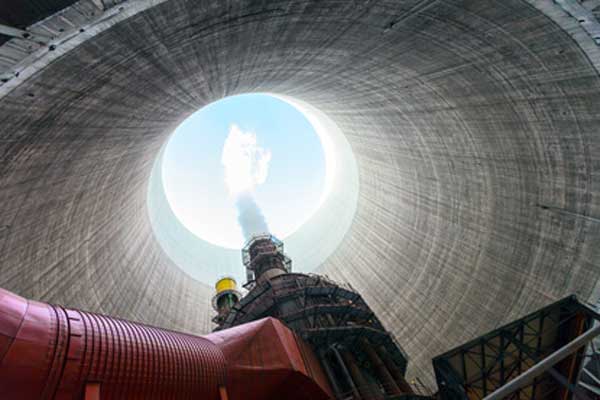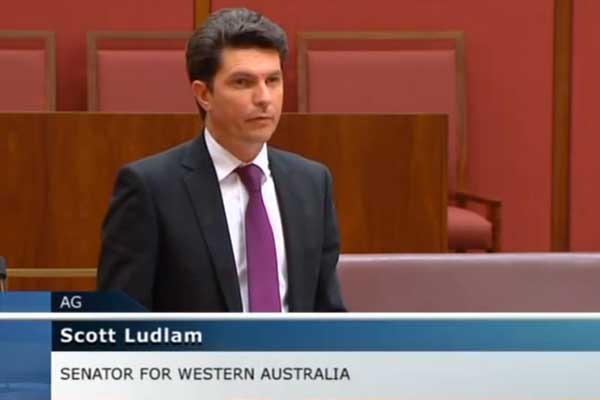At first glance, the decision to call a Royal Commission into nuclear technology in South Australia seems like a curious aberration from the ‘Yes Minister’ rule of inquiries: never call one unless you know in advance what it will tell you.
At the outset of this most polarising of debates, I’d like to propose a truce; particularly with those whose pro-nuclear views are motivated by the overwhelming imperative of climate change. If we respect that not all nuclear advocates intend to contaminate the gene pool and plunge us into nuclear winter, I'd ask in return that you consider the possibility that the anti-nuclear case is based on rational assessment of risks and performance, rather than pure emotion as is sometimes asserted.
For those whose motivation is a safe climate, this is a disagreement over means, not ends.
If the Royal Commission brings a genuine spirit of independence and rigour, and is willing to take evidence on the nuclear sector’s performance in Australia and overseas, the report will provide a valuable contribution to domestic energy and industry policy.
It will paint a picture of an industry in terminal decline; a uranium market in a state of chronic oversupply; 60 years of high-level nuclear waste still awaiting a coherent management solution; ongoing contamination hazards at destroyed reactor sites; unresolved weapons proliferation risks from ‘civilian’ enrichment facilities in Iran; a stalled disarmament agenda and a handful of countries persevering with new plants plagued by cost overruns and safety fears.
Dismissing these lines of evidence as ‘emotional’ is a curiously hollow response given the unambiguous nature of the data.
The ‘World Nuclear Status Report’ is a meticulous country-by-country, plant-by-plant summary, compiled and updated annually by a team of independent researchers, and for years it has shown the industry marching obliviously towards the edge of a cliff.
Hundreds of reactors built in the 1970s and 1980s are now due or overdue for closure, a number that dwarfs the new projects under construction since the industry flat-lined in the 1990s.
Nuclear nations face a complex and costly choice: run these obsolete plants well past their ‘safe’ used-by date, embark on ruinously expensive new construction projects against strong domestic opposition, or choose a completely different course.
The financial markets made up their mind after the Three Mile Island meltdown in 1979: new construction practically ceased in North America and Europe. The technology remains a creature of massive state subsidies, liability exemptions and command economies, a dependence which will only deepen if half-serious proposals to double-down with formidably dangerous plutonium-burning technology come to fruition.
If the Royal Commission is prepared to build future projections on past performance, it will discover a domestic uranium sector that is leaving tens of millions of tonnes of carcinogenic wastes for future populations to deal with, and a sorry history of community division and dispossession.
If resource wealth is the key to Aboriginal advantage and self-determination, it has to be asked why the Mirarr people’s experience of 20-years of uranium mining on their country at Ranger in Kakadu drove them to fight tooth and nail to prevent the opening of a new mine up the road at Jabiluka.

Were it not for the immense risk posed by global warming, it seems likely that the nuclear industry would have run entirely out of friends by now. Thus, one useful service the Royal Commission could provide would be to take a hard look at the role nuclear energy can provide as climate change tightens its grip and the movement to divest and phase out fossil fuels gains welcome pace.
This is a serious question and one that should not be dismissed lightly.
Advocates point to a technology with a half-century performance record of bulk electricity generation with relatively low greenhouse gas emissions, and argue that the climate crisis demands that all low-carbon options should be on the table.
Unfortunately – for the industry at least – the case for nuclear playing a major role in the transition to a low carbon economy is shot to pieces on arguments of cost, risk, timing, competition and scale.
Nuclear energy produces a declining share of global commercial primary energy production at 4.4 per cent. Scaling up by enough to make a major impact on energy supply while closing first and second-generation plants would require the construction of thousands of large reactors in the next few decades; a construction schedule vastly in excess of anything attempted before, at astronomical cost, against a backdrop of growing global insecurity and instability and widespread community rejection of nuclear technology in favour of renewables.
The unthinkable consequences of a well-executed terrorist attack on an operating reactor or high-level waste store keep national security planners awake at night, with the potential for nuclear power plants to be used as pre-deployed radiological weapons by those with malevolent intent.
It seems likely that in the face of this evidence, the Royal Commission will see the industry play its last remaining card: an invitation to set aside the actual performance of existing reactors and imagine the potential of a new generation of nuclear technology: safe, clean, reliable, cheap, modular, proliferation-proof; reactors that consume only nuclear waste and emit only unicorn dust.
Forgive the scepticism: no-one has ever come remotely close to designing and building such a device, and commercial application of imaginary Generation IV reactors lies well over an indefinitely receding horizon; always just a few more years and decades away.
Perhaps more to the point, it may be that there are simpler ways to boil water or induce electrons to flow down a wire than the absurdity of plutonium-burning fission reactors cooled by liquid sodium.

Turning to face the timeless abundance of free solar energy presents a much simpler way forward. It is time that advocates of terrestrial nuclear power instead used their efforts to advocate for better use of the celestial nuclear reactor that sustains rather than threatens life on Earth.
The very qualities of scale, baseload delivery and centralisation that so appealed to energy planners of the 1950s make nuclear technology uniquely unsuited to the realities of the 21st century.
Emerging industrial economies like India, Africa and China’s rural hinterlands are vastly better served by decentralised renewable generators feeding local or regional-scale microgrids.
The plunging costs of solar, wind and micro-hydro generators are combining with cheap, decentralised energy storage technology – driven largely by developments in the IT and automotive industries – to drive the final nail into the fallen potential of nuclear power.
In March 2013 the cover and feature piece of the Economist magazine put the case succinctly: Nuclear Power – the dream that failed.
For the indefinite future, there will still be a need for reliable, dispatchable utility-scale power plants, but even here clean-technology has emerged to checkmate atomic energy: large-scale concentrating solar thermal plants have come online in Spain and the United States, paving the way for vastly more ambitious developments in South America and the Middle East combining cheap photovoltaics with heliostat fields heating overnight molten salt energy storage.
Not through any artifice of emotion or ideology, but by market realities, community opposition and technological obsolescence, the nuclear age is ending – apart from the intergenerational heartache of long-term waste storage and conditioning, which is only just beginning.
This, presumably, is the real motivation behind the Royal Commission. The global enrichment market is oversaturated, and no-one credibly believes nuclear power is a realistic proposition for the sparse South Australian grid.
That leaves only the probability that this whole exercise is designed to build the case for a national or international radioactive waste dump.
Western Australians went through this in 1999, when the Pangea Proposal for an international dump disclosed the reason the industry seeks remote, high-isolation disposal sites.
Practically, it is so dangerous that when the spent fuel inevitably burns its way through engineered containment barriers, it will be as far from human populations as possible. Not surprisingly, communities at Cosmo-Newberry and Pangurr reacted strongly against this perception that their country looked like a conveniently blank space on maps drawn up by bureaucrats in London and Zurich.
This ‘terra nullius’ disposal option was morally and technically bankrupt in 1999, and it still is today. Bitter conflicts over national nuclear dumps at Billa Kalina and Muckaty show the futility of trying to impose remote dumps on unwilling communities.
An inquiry into how to get to zero emissions electricity as cheaply and rapidly as possible would have made a far more timely and valuable contribution to debates over energy policy and rebooting South Australia’s manufacturing sector than another rake through the slowly cooling ashes of the nuclear dream. Nonetheless, the lid has been lifted once again, and we can only hope that the Royal Commissioner is willing to take an unblinking look at the evidence, so that the failed hopes and broken promises of the atomic age can be set to rest once and for all.
* Scott Ludlam is a Senator for Westen Australia for the WA Greens.
Donate To New Matilda
New Matilda is a small, independent media outlet. We survive through reader contributions, and never losing a lawsuit. If you got something from this article, giving something back helps us to continue speaking truth to power. Every little bit counts.



